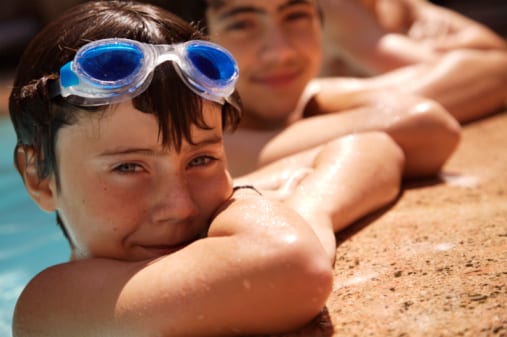Pediatricians love the summer. Overall, our offices are much less
chaotic as we are not dealing with the flu and other illnesses that
winter brings. There are some illnesses, though, that are linked with
warmer weather: sunburn, heat stroke, and certain bug bites, to name
a few. A very common summer related illness is swimmer’s ear, and
right now we are seeing at least three a day in my office.
What is Swimmer’s Ear?
Swimmer’s ear is an infection of the skin lining the ear canal,
usually caused by a bacteria. Normally, ear canals have features
that protect it from infection. There are glands in the canal that
secrete a waxy substance (cerumen) that acts like a water repelling
film. Also, the wax is acidic, making it hard for bacteria to grow.
Lastly, the wax has some proteins in it that are anti-bacterial. When
the ear canal is exposed to a lot of water (swimming!) the wax can
become thin and less acidic, creating an environment that bacteria can
grow easily. Be aware that lake water in the summer can have a high
bacterial count and thus causes swimmer’s ear more easily.
Symptoms
Symptoms usually start with mild itching, but can progress to severe
pain when the ear is touched. Children might also describe a “plugged
up “ feeling and there might also be discharge from the ear.
Prevention
There are some ways to prevent swimmer’s ear. The most effective is
to keep your child’s ear canals as dry as possible. After swimming,
turn his/her head to each side and pull the earlobe in different
directions to help the water run out. Also, as long as you know your
child doesn’t have a perforated ear drum or ear tube in place, you can
put ½ teaspoon of a mixture of one part white vinegar and one part
rubbing alcohol in each ear after swimming. This will not only help
the ear dry, but will help keep the normal acid balance of the canal
intact.
See Your Doctor
Luckily, swimmer’s ear is easily treated with ear drops. The drops
have an antibiotic to kill the bacteria and might contain a mild
steroid to decrease the inflammation. Overall, swimmer’s ear is very common and easily treated. A child with ear pain, though, should be evaluated by his/her doctor so a correct diagnosis and treatment plan can be made.





